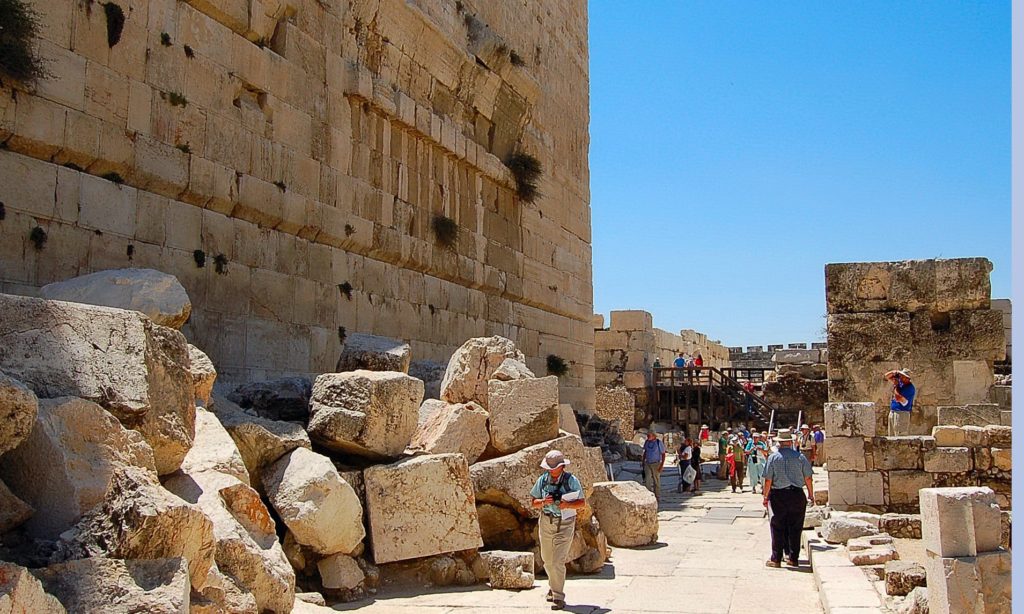
In about 34 B.C., Herod became King of Judea. To improve the image of his backwater kingdom, Herod undertook massive construction projects, including rebuilding Jerusalem’s Second Temple, then located atop a flatted area on Mount Moriah. Beginning in 19 B.C., Herod built and filled a massive trapezoidal-shaped retaining wall around Mount Moriah, creating a much larger platform or Temple Mount on which he built a much larger Second Temple complex to replace the original. The 1000-foot-long western side of the stone retaining wall extended about 100 feet above the Tyropean Road, ancient Jerusalem’s shop-lined main street. An arched bridge, then the highest in the world, straddled the Tyropean Road, allowing visitors to enter the Temple Mount from the west.
According to the Gospel of John (2:20), the reconstructed Second Temple was completed 46 years after the project began, or just before Jesus last visited Jerusalem in about 30 A.D. In 70 A.D., after a long siege, troops sent to Jerusalem by Emperor Nero to put down the First Jewish Revolt broke through the city walls. To protect their Temple, Jewish defenders destroyed the arched bridge leading to the Temple Mount, but to no avail. Roman troops demolished Herod’s Second Temple, throwing its stone blocks onto the Tyropean Road. Over the following centuries, debris collected above the Tyropean Road, eventually reaching near where the arched bridge had connected to the western wall. In 1838, American Edward Robinson identified that connection point and the arch became known as “Robinson’s Arch.” After Israel gained control of the area around the Temple Mount in the 1967 War, archaeologists began excavating the area near Robinson’s Arch, reaching the Tyropean Road in 1987. Today’s visitors can walk a section of the Tyropean Road and see what remains of the arched bridge and what are likely stone blocks from Herod’s Second Temple.
Comments are closed.